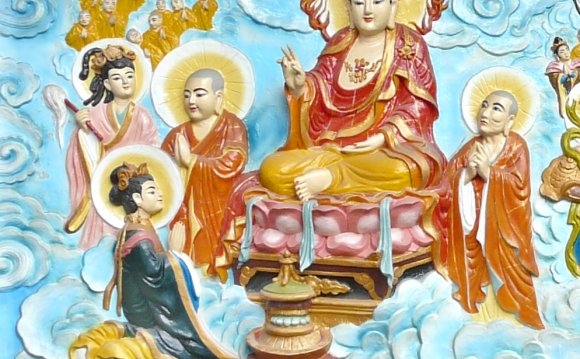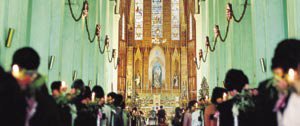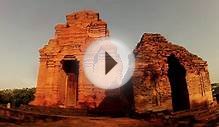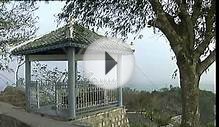
Viet Nam is a multi-religion and multi-belief country. The Vietnamese men and women have a time-honored custom of exercising their opinions. Various cultural groups in Viet Nam have different philosophy associated with their financial and spiritual life.
Traditional belief:  utilizing the perception that each and every item has a heart, considering that the ancient time, the Vietnamese individuals have worshiped a large number of gods, specially those about agriculture such as sunshine, moon, land, mountain, lake and woodland, etc. Each cultural minority in Viet Nam has its own way of practicing its conventional opinions, most noticeably those maintained by some cultural groups such Tay-Thai, Hmong-Dao, Hoa-San Diu-Ngai, Cham-Ede-Gia Rai, Mon-Khmer.
utilizing the perception that each and every item has a heart, considering that the ancient time, the Vietnamese individuals have worshiped a large number of gods, specially those about agriculture such as sunshine, moon, land, mountain, lake and woodland, etc. Each cultural minority in Viet Nam has its own way of practicing its conventional opinions, most noticeably those maintained by some cultural groups such Tay-Thai, Hmong-Dao, Hoa-San Diu-Ngai, Cham-Ede-Gia Rai, Mon-Khmer.
Furthermore, the preferred and time-honored custom associated with the Vietnamese men and women, including some cultural minorities, is ancestor worship and commemoration of death anniversaries. Every Vietnamese household has actually an altar to worship their forefathers and attaches value towards commemoration of death anniversaries of predecessors. Beside ancestor worship in each household and each clan, numerous villages have a communal residence or a temple to worship the Village Deity. The customized of worshiping the Village Deity is an original feature of Vietnamese villages. The Village Deity worshiped inside village’s temple and public house can be a god or a highly skilled figure that rendered great service such as the forefather of a traditional handicraft or a national hero just who considerably added toward cause of nationwide building and battling international invaders. The Vietnamese people additionally worship various other gods such as the Kitchen God and Jesus associated with the earth.
Religion: Viet Nam has actually six significant religions, particularly Buddhism, Catholicism, Protestantism, Muslim, Caodaism and Hoa Hao Buddhism.
Buddhism: Buddhism was introduced in Viet Nam in the early years A.D. From the 10th towards the 15th century, Buddhism created rapidly in Viet Nam after Viet Nam had gained freedom. Buddhism reached its severe appeal under the Ly-Tran Dynasty (from very early 11th century toward belated 14th century). King Tran Nhan Tong ended up being the president of this unique Truc Lam Yen Tu School of Zen, characterized by imagination, balance and integration. Theravada Buddhism was initially introduced in southern Viet Nam inside 4th century. Most Theravada Buddhist followers are Khmer individuals living in the Mekong Delta, hence called Khmer Theravada Buddhism. At the moment, there are 10 million Buddhist supporters, 17, 000 pagodas, 40, 000 Buddhist monks, and 36 schools for Buddhism trained in Viet Nam.
Catholicism: Historians believe Catholicism was initially introduced in Viet Nam in 1533. From 1533 to 1614, priests of Portuguese Order of St.Francis and Spanish purchase of Preachers accompanied vendor vessels to Viet Nam. From 1615 to 1665, priests of Portuguese Society of Jesus joined Viet Nam from Macau (China), in both Dang Trong (south of Gianh River) and Dang Ngoai (north of Gianh River). At present, Viet Nam Catholic Church has actually 26 dioceses, 6 million followers, 6, 270 churches, 19, 000 dignitaries, 6 grand seminaries, and 2 training schools.
Protestantism: Protestantism was initially introduced in Viet Nam into the late 19th and early twentieth century by the Christian and Missionary Alliance – CMA, later than other religions. 1911 is generally accepted as first 12 months when Protestantism ended up being introduced into Viet Nam. Currently, there are over one million Protestants, 500 dignitaries, 300 Protestant churches, and 01 biblical theology institute in Viet Nam.
Muslim: In Viet Nam, Muslim followers are typically Cham individuals. Relating to historic documents, the Cham had been first introduced to Muslim within the tenth and 11th century. There's two schools of Muslim in Viet Nam: the older one (Cham Ba Ni) with supporters in Binh Thuan and Ninh Thuan Provinces; and newer one (Cham Islam) with followers in Chau Doc (An Giang Province), Ho Chi Minh City, Tay Ninh and Dong Nai Province. At present, you will find 79 mosques, 72, 000 Muslim supporters and 700 dignitaries in Viet Nam.
Caodaism: Caodaism is an indigenous faith, officially established in Go Ken Pagoda, Tay Ninh Province in mid-november 1926. Currently, you will find 2.4 million Cao Dai supporters, 31, 700 dignitaries and over 100 churches in Viet Nam.
Hoa Hao Buddhism: Hoa Hao Buddhism is another native religion produced by Huynh Phu So on July 4th May 1939 in Hoa Hao Village, An Giang Province. Currently, you can find 1.3 million Hoa Hao Buddhist supporters, over 1, 700 monks and 1, 200 pagodas in Viet Nam.
Freedom of Belief and Religion: the ability to freedom of belief and religion of most Vietnamese residents is given by the Constitution and ensured used. Article 70 regarding the Vietnamese 1992 Constitution stipulates: "people have the to freedom of belief and faith, and could exercise or otherwise not practice any religion. All religions tend to be equal ahead of the law. Public venues of spiritual worship are shielded legally. No body gets the straight to infringe regarding the freedom of belief and religion or to use the second to violate State legislation and policies."
The right to freedom of belief and faith is shown in several legal papers. The Ordinance on opinion and Religion coming into force on 15 November 2004 has institutionalized state instructions and policies on belief and faith and ensured the exercise of directly to freedom of belief and religion. All people, aside from their particular belief and faith, are equal before the legislation, eligible for follow or perhaps not to follow along with a religion, entitled to show their values, exercise worship rituals, pray and participate in spiritual activities and in the study of religious theories and ethics. All religious businesses are equal prior to the law. The State ensures the right to freedom of belief and faith, defense for the services and possessions of spiritual establishments such pagodas, churches, mosques, oratories, sanctuaries, temples and head office of religious businesses, spiritual schools, bibles and worshiping items. On 1 March 2005, the Government issued Decree 22/2005/ND-CP directing the implementation of the Ordinance on Belief and Religion.
YOU MIGHT ALSO LIKE












